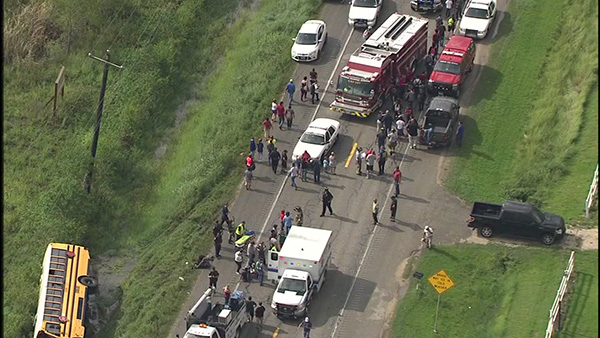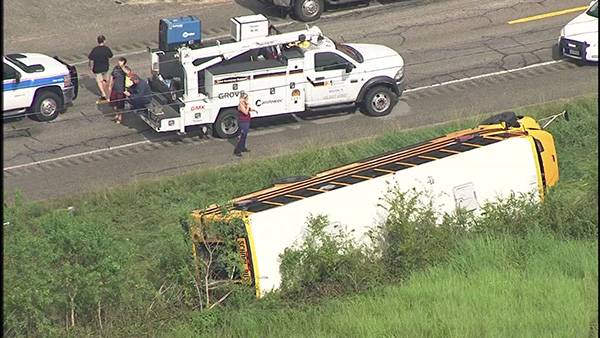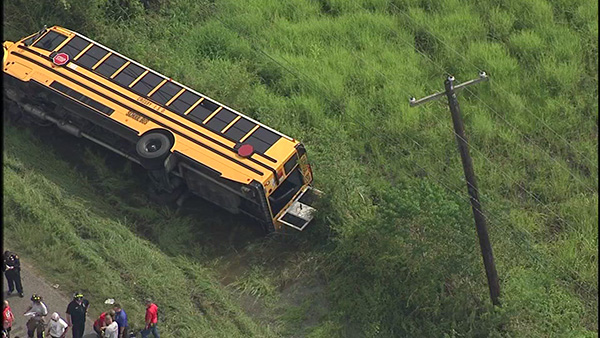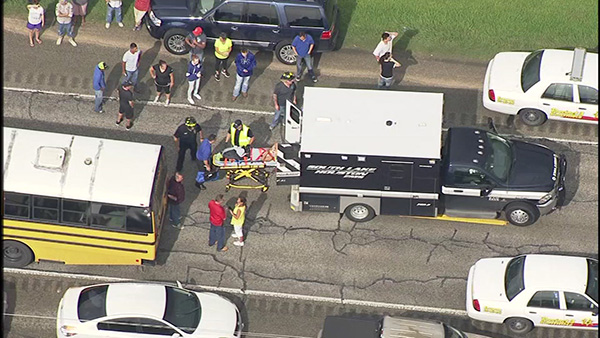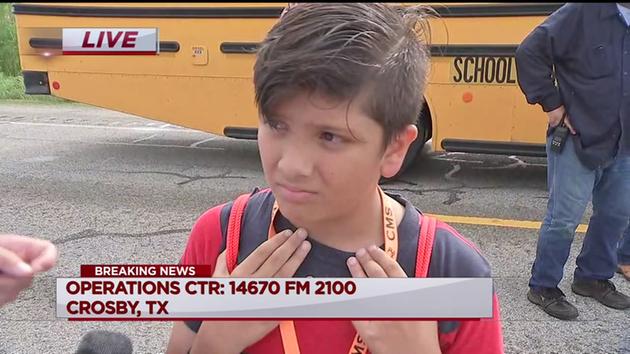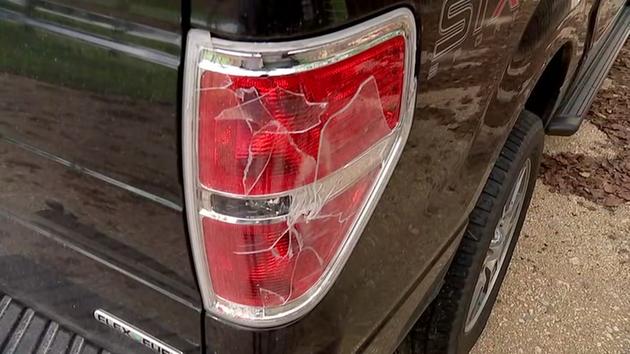

Satellite-based radar confirms man-made Texas earthquakes
Published September 22, 2016
Associated Press
WASHINGTON – Scientists used radar from satellites to show that five Texas earthquakes, one reaching magnitude 4.8, were caused by injections of wastewater in drilling for oil and gas.
In 2012 and 2013, earthquakes — five of them considered significant — shook East Texas near Timpson. A team of scientists for the first time were able to track the uplifting ground movements in the earthquake using radar from satellites. A study in the journal Science on Thursday says it confirms that these were not natural, something scientists had previously said was likely using a more traditional analysis.
Study co-author Stanford University William Ellsworth said the technique provides a new way to determine what quakes are man-made.
The team looked at two sets of wells, eastern and western. The eastern wells were shallow and the satellite radar showed that the eastern wells weren't the culprit, but the high-volume deeper western ones were, Ellsworth said.
Cornell University seismologist Rowena Lohman, who wasn't part of the study, said it shows that satellite data of ground changes provide good ways to complement what's measured on the ground.
The quakes have stopped, but Ellsworth said, "the area was shaken pretty thoroughly over a period of about 18 months."
Ellsworth said the shaking stopped when injection of wastewater dramatically decreased. And that's a lesson that other areas — such as Kansas and Oklahoma — also have learned.
"Part of the solution is how we manage this problem," Ellsworth said. "If we get the pressure to go down at depth, the earthquakes stop. "
======
Texas quakes man-made, caused by wastewater injections – satellite data
Published time: 23 Sep, 2016 15:42
Get short URL

An oil rig is silhouetted against the sunset in St. Lawrence, Texas © Jessica Rinaldi / Reuters
AddThis Sharing Buttons
Share to Facebook284Share to TwitterShare to Reddit1Share to StumbleUponShare to Google+Share to Tumblr
Five earthquakes which shook Texas in 2012 and 2013 were caused by wastewater injections during drilling for oil and gas, scientists said after analyzing satellite radar data.
A series of earthquakes struck near the town of Timpson in eastern Texas over the course of a year and a half, with the team of American and British researchers looking into the most powerful of them, which took place in 2012 and reached a magnitude of 4.8.
The researchers used Interferometric Synthetic Aperture Radar, or InSAR, to track the ground movements in the quakes and establish that their causes weren’t natural.
“Our study reports on the first observations of surface uplift associated with wastewater injection. The detection of uplift when combined with well-injection records provides a new way to study wastewater injection,” study co-author William Ellsworth, a geophysics professor at Stanford’s School of Earth, Energy & Environmental Sciences, told the university’s website.
The scientists examined four high-volume wells near Timpson, which had around 760 million liters of wastewater pumped into them annually at peak activity.
The satellite data revealed that the two deep wells west of the town were responsible for the quake, while the shallow wells in the east were not connected to it.
According to the paper, published in the journal Science, the wells, which had wastewater injected at the depth of over 1 mile, lie directly above where the earthquake occurred.
“The area was shaken pretty thoroughly over a period of about 18 months,” Ellsworth said, adding that the tremors stopped only when the injections were drastically decreased.
The scientist stressed that it’s crucial to understand the geology of the area for the injections of waste water to be safe.
“The recent upturn in seismicity in Oklahoma and Kansas commonly happens where injection occurs close to the crystalline basement, so we’re getting lots of earthquakes in those places,” Ellsworth said.
“Injecting at shallower depth above a blocking formation would reduce the ability of the pore pressures to migrate to the basement and activate the faults,” he added.
Cornell University seismologist Rowena Lohman, who wasn’t part of the research, told AP that the satellite data has proven to be a useful addition to the measurements made on the ground as wastewater injections were previously also blamed for the Texas quakes.
Surface uplift and time-dependent seismic hazard due to fluid injection in eastern Texas
- Manoochehr Shirzaei1,*,
- William L. Ellsworth2,
- Kristy F. Tiampo3,†,
- Pablo J. González4,‡,
- Michael Manga5
- ↵*Corresponding author. Email: shirzaei@asu.edu
↵†
Present address: Cooperative Institute for Research in Environmental
Sciences and Department of Geological Sciences, UCB 216, University of
Colorado, Boulder, CO 80309, USA.
↵‡
Present address: COMET and Liverpool Earth Observatory, Department of
Earth, Ocean and Ecological Sciences, University of Liverpool, Liverpool
L69 3GP, UK.
Science 23 Sep 2016:
Vol. 353, Issue 6306, pp. 1416-1419
DOI: 10.1126/science.aag0262
Abstract
Observations
that unequivocally link seismicity and wastewater injection are scarce.
Here we show that wastewater injection in eastern Texas causes uplift,
detectable in radar interferometric data up to >8 kilometers from the
wells. Using measurements of uplift, reported injection data, and a
poroelastic model, we computed the crustal strain and pore pressure. We
infer that an increase of >1 megapascal in pore pressure in rocks
with low compressibility triggers earthquakes, including the 4.8–moment
magnitude event that occurred on 17 May 2012, the largest earthquake
recorded in eastern Texas. Seismic activity increased even while
injection rates declined, owing to diffusion of pore pressure from
earlier periods with higher injection rates. Induced seismicity
potential is suppressed where tight confining formations prevent pore
pressure from propagating into crystalline basement rocks.
=====

A researcher reviews the seismic waves generated by an east Texas quake that occurred on 10 May 2012.
Associated Press
Series of Texas quakes likely triggered by oil and gas industry activity
By Sid PerkinsSep. 22, 2016 , 2:00 PM
During the past decade or so the oil and gas industry has injected wastewater into deep rocks in eastern Texas, causing Earth’s surface to bulge ever so slightly—and likely triggering a series of tremors there in 2012, a new study suggests. Scientists say the work offers hope that similar analyses of the landscape in other oil- and gas-producing regions could help identify areas at risk of human-caused earthquakes.
The 2012 quakes shook the small town of Timpson, Texas, which lies northeast of Houston near the Louisiana state line. The largest, a 4.8-magnitude quake, and three more magnitude-4 or higher that followed, all originated in a suspicious spot: directly beneath two wells where wastewater generated during oil and gas production in the region is pumped into porous sandstone layers about 1.8 kilometers underground. Oil and gas producers dispose of their wastewater deep underground for a variety of reasons; sometimes pumping fluid into the reservoir helps boost production, and in other cases it’s a convenient method of getting polluted water out of retention ponds on the surface so that it doesn’t inadvertently spill to pollute rivers, streams, or other sources of drinking water.
According to data provided by the companies that owned the wells, between 2007 and mid-2012 the two injection wells nearest the quakes and another two wells fewer than 10 kilometers away pumped, on average, about 890,000 cubic meters of water into the ground each year. (Or, put another way, that’s about one Olympic swimming pool worth of wastewater pumped underground each day.)
Many studies have already noted the link between wastewater injection wells and swarms of nearby tremors, says Manoochehr Shirzaei, a geophysicist at Arizona State University, Tempe. Few doubt that injection wells are the chief reason that Oklahoma has overtaken California as the earthquake capital of the United States’s lower 48. But in the new analysis, he and his colleagues looked to build more than just a circumstantial case linking the four underground disposal wells to Timpson’s temblors.
First, the team used a technique that compared a series of radar images of the area taken from space. Between May 2007 and November 2010, the terrain between the two sets of injection wells rose as much as 3 millimeters per year, on average, the researchers report online today in Science. Although hordes of studies have noted subsidence, or sinking, of the landscape when oil, gas, or water for irrigation are withdrawn from underground reservoirs, this new analysis is one of the first to note uplift as a result of pumping fluid into the ground, Shirzaei says.
The team then went further. Using computer simulations, and the bulging ground as a constraint, the researchers found that over time the wastewater seeped away from the injection point and boosted water pressure within the tiny spaces in the surrounding rocks—a parameter scientists call pore pressure. Eventually, the expanding front of increased pore pressure reached fault zones and triggered quakes between depths of 3.5 and 4.5 kilometers, Shirzaei says. The team’s models suggest the pore pressure in the rocks along the fault zones increased to a level that has been large enough to trigger aftershocks to major quakes elsewhere in the world, he notes.
The group’s combination of monitoring uplift of the landscape over time and modeling the effects of wastewater injection on pore pressure “is a powerful approach,” says Shemin Ge, a hydrogeologist at the University of Colorado, Boulder. “It will help advance our understanding of what’s actually going on in rocks near wastewater injection sites.”
The new findings will also guide where future wells should be located and how much wastewater—and possibly more importantly, how slowly such wastewater—should be pumped into areas near known fault zones, Ge says. Geological context is also important, she says. As Shirzaei and his team noted in one part of their study, some areas seemed immune from tremors, possibly because layers of impermeable rocks lie between the wastewater injection point and susceptible fault zones. In such a configuration, the wastewater can’t migrate to the fault and cause a quake. “Without water, nothing’s going to happen,” she says.
Drilling and maintaining wells to directly monitor water pressure in deep rocks is both challenging and costly, says Roland Bürgmann, a geophysicist at the University of California, Berkeley. Thus, he suggests, injection-induced uplift, detectable from space, could serve as a less-expensive warning sign of increased seismic risk. “We can’t predict such induced earthquakes,” he notes, “but maybe we can better understand the conditions that lead to them.”


